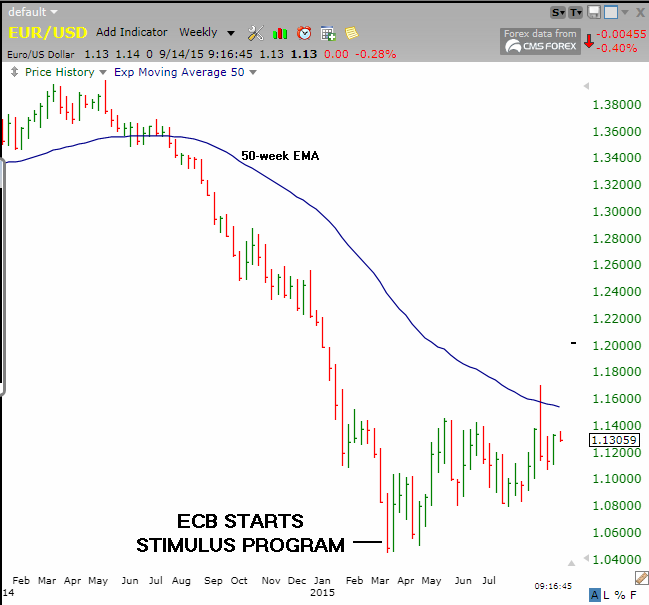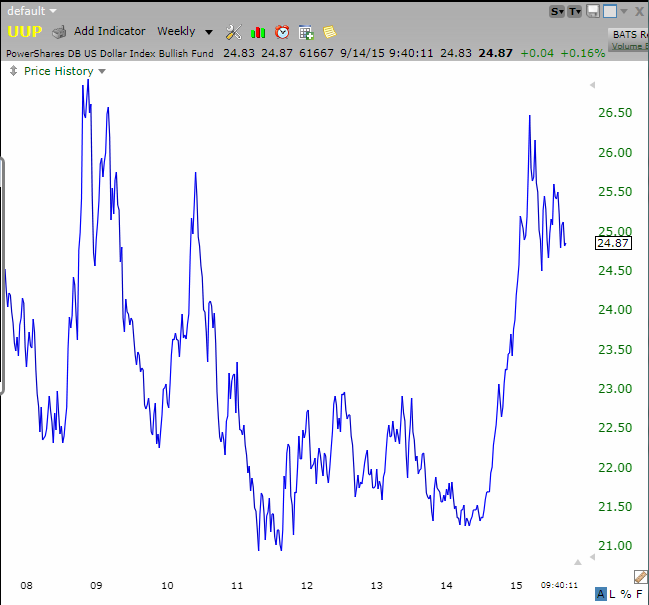A hidden string ties together currencies and crude oil, with price actions in one venue forcing a sympathetic or opposing reaction in the other. This correlation persists for many reasons, including resource distribution, balance of trade (BOT) and market psychology. And crude’s significant contribution to inflation and deflation intensifies these interrelationships during
strongly trending periods, both higher and lower.
In addition, crude oil is quoted in U.S. dollars (USD) so that each uptick and downtick generates immediate realignment between the greenback and numerous forex crosses. These movements are less correlated in nations without significant crude oil reserves, like Japan, and more correlated in nations that have significant reserves, like Canada, Russia, and Brazil. (For more, read: Two Great Currencies to Profit From Oil Volatility.)
Many nations leveraged their crude oil reserves during the energy market’s historic rise between the mid-1990s and mid-2000s, borrowing heavily to build infrastructure, expand military operations and initiate social programs. Those bills came due after the 2008 economic collapse, with some countries deleveraging while others doubled down, borrowing more heavily against reserves to restore trust and trajectory to their wounded economies.
These heavier debt loads helped keep growth rates high until global crude oil prices collapsed in 2014, dumping commodity-sensitive nations into recessionary environments. Canada, Russia, Brazil and other energy-rich countries have struggled since then, adjusting to plummeting values in Canadian dollars (CAD), Russian rubles (RUB) and Brazilian reals (BRL).
Selling pressure has spread into other commodity groups, raising significant fears of worldwide deflation. This has tightened the correlation between affected commodities, including crude oil, and economic centers without significant commodity reserves, like the Eurozone. Currencies in nations with significant mining reserves but sparse energy reserves, like the Australian dollar (AUD), have plummeted along with the currencies of oil-rich nations.
Trouble In The Eurozone
Plummeting crude oil prices set off a deflationary scare in the Eurozone after local consumer price indices turned negative at the end of 2014. Pressure built on the European Central Bank (ECB) in early 2015 to introduce a large-scale monetary stimulus program to stop the deflationary spiral and add inflation into the system. The first round of bond buying in this European version of quantitative easing (QE) began the first week of March 2015.
EUR/USD Vs. Crude Oil

Many forex participants focus their full attention on the EUR/USD cross, the most popular and liquid currency market in the world. Tight correlation with falling crude oil can be easily seen on the above weekly chart. The currency pair topped out in March 2014, just three months before crude oil entered a mild decline that accelerated to the downside in the fourth quarter, at the same time that crude broke down from the upper 80s to low 50s. Euro selling pressure continued into March 2015, ending at the same time that the ECB initiated its monetary stimulus program.
Impact On The U.S. Dollar
While the United States passed Saudi Arabia in worldwide petroleum production in 2014, the U.S. dollar has benefited from crude oil’s precipitous decline for several reasons. First, U.S. economic growth since the bear market has been unusually strong compared to its trading partners, keeping balance sheets intact. Second, while the energy sector significantly contributes to U.S. GDP, the U.S.' great economic diversity reduces its reliance on that single industry.
USD Vs. Crude Oil

PowerShares DB U.S. Dollar Index Bullish Fund (UUP), a popular USD trading proxy, hit a multi-decade low at the height of the last bull market cycle in 2007 and turned sharply higher, hitting a three-year high when the bear market ended in 2009. Higher lows in 2011 and 2014 set the stage for a powerful 2014 uptrend that began just one month after crude oil peaked and entered its historic downtrend.
Inverse lockstep behavior continued between instruments into March 2015, when the USD topped out and entered a slow grind pullback that extended into the second half of the year. The top was simultaneous with the start of the ECB's QE program, illustrating how monetary policy can overcome crude oil correlation, at least for significant time periods. The run-up into an anticipated FOMC rate hike cycle has contributed to this holding pattern as well.
Consequences Of Over-Dependence
It makes sense that nations that are more dependent on crude oil exports have incurred greater economic damage than those with more diverse resources. Russia offers a perfect example, with energy representing 58.6% of their total 2014 exports. The country fell into a steep recession in 2015, with its GDP declining 4.6% year over year in the second quarter of 2015, intensified by Western sanctions tied to its Ukraine incursion.
Countries With The Highest Crude Oil Exports (as of January 1, 2014, Source - CIA Factbook)
COUNTRY - Barrels per day
- Saudi Arabia - 6,880,000
- Russia - 4,720,000
- Iran - 2,445,000
- Iraq - 2,390,000
- Nigeria - 2,341,000
- United Arab Emirates - 2,142,000
- Angola - 1,928,000
- Venezuela - 1,645,000
- Norway - 1,602,000
- Canada - 1,576,000
Economic diversity shows a greater impact on underlying currencies than absolute export numbers. Colombia ranks just 18th but crude oil represents 45% of total exports, pointing to high dependence illustrated in the collapse of the Colombia peso (COP) since the middle of 2014. Meanwhile, that country’s economy has cooled off considerably after a torrid growth spurt, although it’s unlikely to enter a recession in 2015.
The Ruble's Collapse

Many Western forex platforms halted ruble trading in early 2015 due to liquidity issues and capital controls, encouraging traders to use the Norwegian krone (NOK) as a proxy market. USD/NOK shows a broad basing pattern between 2010 and 2014 at the same time that crude oil was bouncing between 75 and 115. Crude oil’s downturn in second-quarter 2014 matches a powerful uptrend that accelerated in the fourth quarter, breaking base resistance near 6.5000.
That rally continued into second-half 2015, with the currency pair hitting a new decade high. This points to continued stress on the Russian economy, even though crude oil has come off its deep lows. High volatility makes this a difficult market for long-term forex positions, but short-term traders can book excellent profits in this strongly-trending market.
The Bottom Line
Crude oil shows tight correlation with many currency pairs for three reasons. First, the contract is quoted in U.S. dollars so that pricing changes have an immediate impact on related crosses. Second, high dependence on crude oil exports levers national economies to uptrends and downtrends in the energy markets. And third, collapsing crude oil prices have triggered sympathetic declines in industrial commodities, raising the threat of worldwide deflation that undermines economic growth, forcing currency pairs to reprice relationships.
